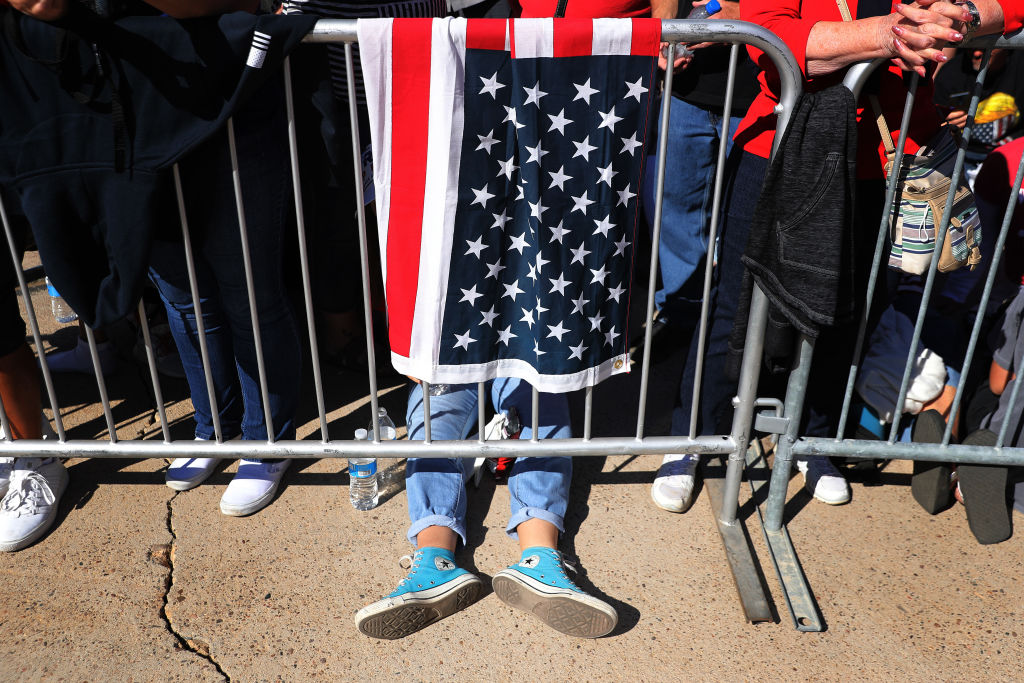When Michael McCullough was editor of The Battle Creek Enquirer, he had the Kellogg Company CEO’s personal cell number. And if a story got any detail wrong, McCullough could expect a phone call from the company spokesperson.
Co-published by The Guardian
If you read the back of your cereal boxes, you may know of Battle Creek, Michigan, as the original headquarters of Kellogg and Post. Indeed, breakfast is central to its history. Cereal manufacturing jobs, propelled by innovations like W.K. Kellogg’s six-hour work day, created a middle class here just as auto manufacturing did across the state in and around Detroit.
What happened to those auto jobs also happened to cereal.
There used to be a strong connection between companies like Kellogg and communities like Battle Creek. There still is, on a more surface level—Kellogg is plastered all over town, from the community college, to an arena, to one of the nation’s largest private foundations, which contributes generously to Battle Creek.
But is that all a company owes the community where it built its wealth? Unlike in the past, “You don’t see the commitment to seeing Battle Creek thrive,” says McCullough. As at most companies, Kellogg executives’ jobs are to generate returns for shareholders. That’s why the foundation can make donations to the local United Way while the company relocates jobs.
Towards the end of McCullough’s time at the paper, a reporter at the Enquirer got the new CEO’s name wrong, and the editor waited for a call coming down hard on the paper. But it never came.
"There are a lot of folks who feel betrayed by our public institutions and our government.”
-- Michael McCullough, former editor, The Battle Creek Enquirer
That was “so emblematic of the shift in that relationship—that it was just not something that even came [on Kellogg’s] radar,” he says.
“Maybe no one there even read the story.”
Joining the ranks of the journalists impacted by a gutted newspaper industry, McCullough was laid off in 2016. He had moved to the area for a job at the paper in the late 1990s, but the city “got under [his] skin,” and he stayed.
Battle Creek is one of the infamous blue-to-red “pivot” areas that voted for Barack Obama twice and flipped to Donald Trump. In 2016, Battle Creek’s Calhoun County went to Trump with 53 percent of the vote, helping him win Michigan by 10,704 votes out of nearly 5 million cast.
President Trump returned the favor by visiting Battle Creek for a rally last December (on the night he was impeached), filling up the Kellogg Arena.

President Trump speaks at the Kellogg Arena last December in Battle Creek, Michigan. Photo: Scott Olson/Getty Images.
McCullough imagines Trump chose Battle Creek for the “same reason he chooses a lot of Rust Belt cities and towns. There are a lot of folks who feel betrayed by our public institutions and our government.” McCullough, who describes himself as an independent, feels that “so much of [the] polarization in our country is tied directly to the de-prioritization of the development of small towns and small cities.”
“We just have a really growing segment of our population [for whom] no one is standing up for their interests,” he says, arguing that the Democratic Party is no longer the party of the working class.
Battle Creek, like many small towns and manufacturing areas, has suffered for decades as trade deals and de-unionization have removed manufacturing jobs.
Still, the county’s enthusiasm for the Republican ticket may be declining. Hillary Clinton lost Calhoun by 12.5 percentage points —two years later, Democratic Governor Gretchen Whitmer lost the county by just 2.5 percent, or 1,227 votes. For Michigan at large, most polls show Joe Biden with a substantial lead over Trump.
There are other factors coming into play as well: anxiety about declining manufacturing jobs and President Trump’s trade deals, statewide vote-by-mail and, of course, a cataclysmic global pandemic.
* * *
Over the past decade, Battle Creek’s recovery has lagged behind the nation’s. It was one of 104 metro areas that had fewer jobs in 2019 than it did before the Great Recession, according to a Brookings Institution analysis. Jim Robey, the director of regional economic planning services at the W.E. Upjohn Institute for Employment Research in nearby Kalamazoo, says that “productivity enhancements” by companies—the same output with fewer workers—are important to consider. Yet Brookings’ estimation of a net loss of 2,200 jobs is substantial in small Calhoun County, population roughly 134,000.
Most people in Battle Creek whom I spoke with were not surprised by these statistics. Battle Creek, like many small towns and manufacturing areas, has suffered for decades as trade deals and de-unionization have removed manufacturing jobs. Battle Creek is the “breakfast capital of the world,” as a monument downtown proudly proclaims, the birthplace of cereal and the original home to both Kellogg and Post. The “Cereal City” may be famous for Grape-Nuts, but with those jobs long in decline, the largest employer today is a Japanese auto parts company.
Calhoun County averaged 4.5 evictions a day before the pandemic, and Michigan’s eviction moratorium is set to expire July 15.
Many of the people I interviewed referred to Battle Creek as “gritty”—a place that needs to be resilient for a reason. More than one person also wondered what Battle Creek’s identity was today—now quite sure that it doesn’t have much to do with cereal any longer.
The COVID recession has dealt a further blow to the area. In May, the region had a preliminary unemployment rate of 22 percent, according to estimates from the Bureau of Labor Statistics.
Even though Battle Creek’s employment rate was back to pre-recession levels and experiencing job growth before the pandemic hit—a positive story—it was not necessarily due to work that came with good pay and benefits. Adjusted for inflation, wages in Battle Creek have stagnated since the Great Recession, falling below the state average.
In 2019, the poverty rate in Battle Creek was 22.3 percent, higher than the state average of 14.1 percent. Approximately 45 percent of people in Calhoun County cannot regularly afford basic needs, according to data from the Michigan Association of United Ways.
“While we don’t know exactly the percentage increase with the pandemic, we know that it’s grown,” says Chris Sargent, executive director of the United Way of the Battle Creek and Kalamazoo Region, pointing out that a local food bank is distributing three times as much food as it did before the crisis.
Before the pandemic hit, there was growth to be excited about in the city, says Jeremy Andrews, a community organizer and small business owner, citing new businesses downtown and new real estate. While he says the momentum “is not dead by any means,” Battle Creek pre-pandemic “felt like for the first time in a long time that things were happening.”
The city announced in May that it was facing a $4.9 million budget shortfall for fiscal year 2021 and furloughed nearly 100 city employees. Hundreds of low-income jobs have been lost.
As elsewhere, people are out of work and having trouble paying their bills. The county averaged 4.5 evictions a day before the pandemic, and Michigan’s eviction moratorium is set to expire July 15.
The community, ever resilient, has responded with mutual aid projects, food deliveries and new groups and partnerships to coordinate help.
* * *
It is clear that the pandemic has broken open some truths about inequality. Racial inequality in Battle Creek, like across Michigan and the country at large, is reflected by who is most affected by the pandemic.
Black residents of Calhoun County make up 16.9 percent of coronavirus cases, though they compose 11 percent of the county population. And Asian residents make up 14 percent of coronavirus cases, though they are just 3 percent of the county population (the city has a significant Burmese community).
Damon Brown, the founder of the nonprofit Reintegration to Support and Empower (RISE), has directed much of his efforts to getting needed resources in the hands of community members. RISE is distributing healthy food along with hygiene and cleaning products to community members every Friday between 3 p.m. and 5 p.m.
“We have not made it to 4 p.m. yet,” due to the demand, says Brown.
“It’s looking to shape up like we’re going to get the same old shit no matter what, anyway.”
-- Jeremy Andrews, community organizer, on the presidential election
RISE is joined by numerous partnerships, including the United Way, in its community pandemic response. Brown points out that predominantly white organizations are working with predominantly Black ones, which he wouldn’t have anticipated before the pandemic.
As Michigan continues to reopen, it is likely these services will continue to be needed. “We expect that the real impact of the pandemic will just now start to be realized—the economic impact,” says L.E. Johnson, chief diversity officer at the Southwestern Michigan Urban League. “When the stimulus checks run out, when the food assistance ends, then we’ll see the surge in need for support.”
Recent uprisings against police brutality have also taken place in the small city of Battle Creek. The city’s African American Collaborative in partnership with the Urban League coordinated a protest downtown, though Johnson tells me, “Our rally wasn’t the start of anything per se, because community members are already working in the community chipping away at institutional racism.”
The racist history of Calhoun County is evident in its name. There is no long-dead Michigan hero named Calhoun—the name of this county, and others in Southwestern Michigan, were taken from Andrew Jackson’s cabinet when Michigan was lobbying the Jackson administration for statehood. John C. Calhoun from South Carolina, a slave owner and Jackson’s vice president, became the county’s namesake.
Some activists in Battle Creek are campaigning to change the name of Calhoun County to Truth County, after Sojourner Truth, the famous Black abolitionist and women’s rights activist who lived in Battle Creek for 26 years before her death.
In mid-June, the large Sojourner Truth statue in downtown Battle Creek was adorned with flowers and surrounded by candles and protest signs, remnants of the public tribute to George Floyd.
Walking around downtown on a temperate June day, I find the place about empty. I’m reminded of the downtowns of many deindustrialized cities: a few burgeoning, quirky businesses, surrounded by vacant streets.
However, I am walking in the middle of town during a global pandemic. If not for COVID-19, Battle Creek would be hosting the National Cereal Festival and the downtown would be bustling.
The city views revitalizing downtown as the catalyst for reinvigorating the rest of town. John Hart, development manager with Battle Creek’s small business development team, says that small businesses are the “lifeblood” of any city.
“You can attract large corporations,” he says, “but ultimately, when you’re talking about quality of life, that comes from the community itself and the grassroots organizations that exist.” That’s what creates the identity of the community. He points out that small businesses bring jobs to communities, too.
Hart and his team have worked hard to help insulate local shops from the effects of the pandemic. He says their loan and mortgage assistance program assisted 48 small businesses—out of 49 applicants—in four city districts.
Battle Creek’s recovery from the Great Recession has been uneven. Says RISE founder Damon Brown: “The question would be, for who? Who recovered?”
A particularly innovative project out of the crisis is an online platform for local restaurants to sell takeout and delivery. Eatsbc.com was created to help restaurants transition their businesses to the Internet while dine-in options were closed—and avoid the costly fees that are inherent to companies like Grubhub and DoorDash. Now that restaurants are slowly reopening, Eatsbc.com will still be a resource for local restaurants and residents. It’s new, community-focused ideas like this that could help spur the city’s revival.
Yet revival is often uneven. When I ask Brown’s opinion on Battle Creek’s recovery from the Great Recession, he counters: “The question would be, for who? Who recovered?”
While Battle Creek, he says, “is making a comeback,” in his opinion the city “is not investing into the people of Battle Creek.” He notes there are funding disparities in addition to economic ones affecting communities, like the low-income and predominately African-American Washington Heights. Indeed, pre-recession, 45 percent of Black children in Battle Creek lived in poverty, and, echoing national disparities, the Black unemployment rate was nearly twice the white unemployment rate.
“That’s a Great Depression for that particular community,” says Brown.
The election may seem distant given the current crises. And the politics surrounding that December Trump rally may have changed entirely because of a disastrous federal response to the pandemic. There’s still a lot of time between now and Election Day.
“I don’t think people are thinking about the election at all,” says Andrews, the organizer and small business owner. It’s both odd and scary, he says, “but I think it’s kind of awesome too. It’s great that we’re not flooded with that.”
Besides, he says, “It’s looking to shape up like we’re going to get the same old shit no matter what, anyway.”
Copyright 2020 Capital & Main






